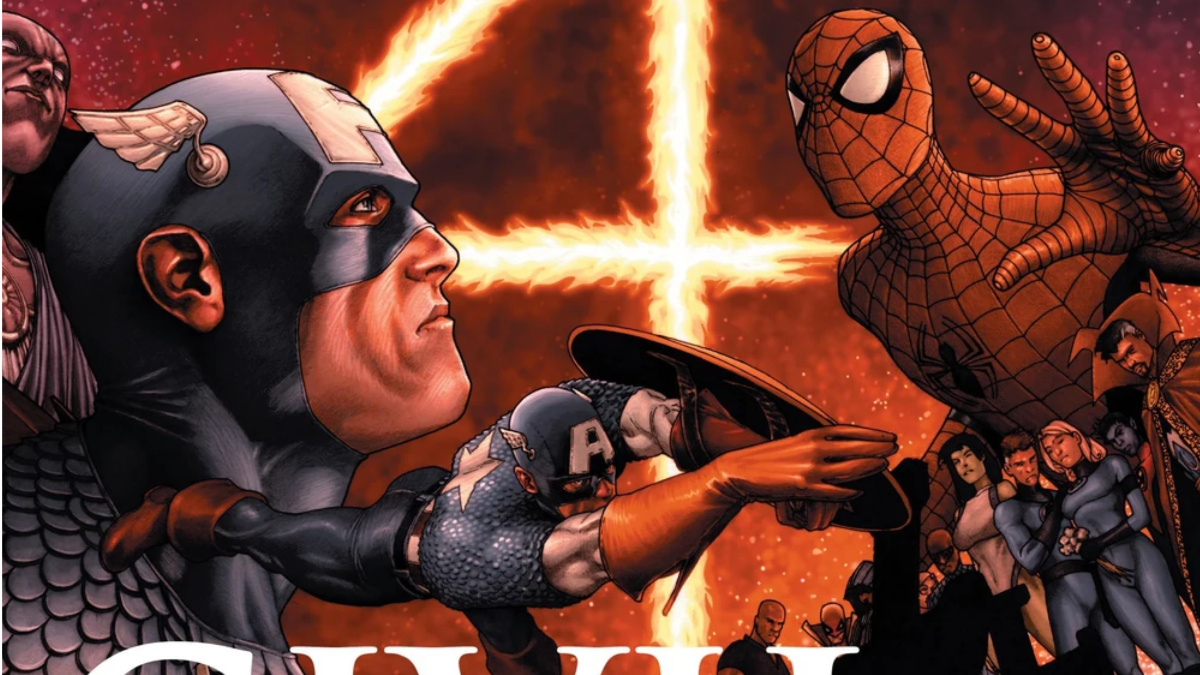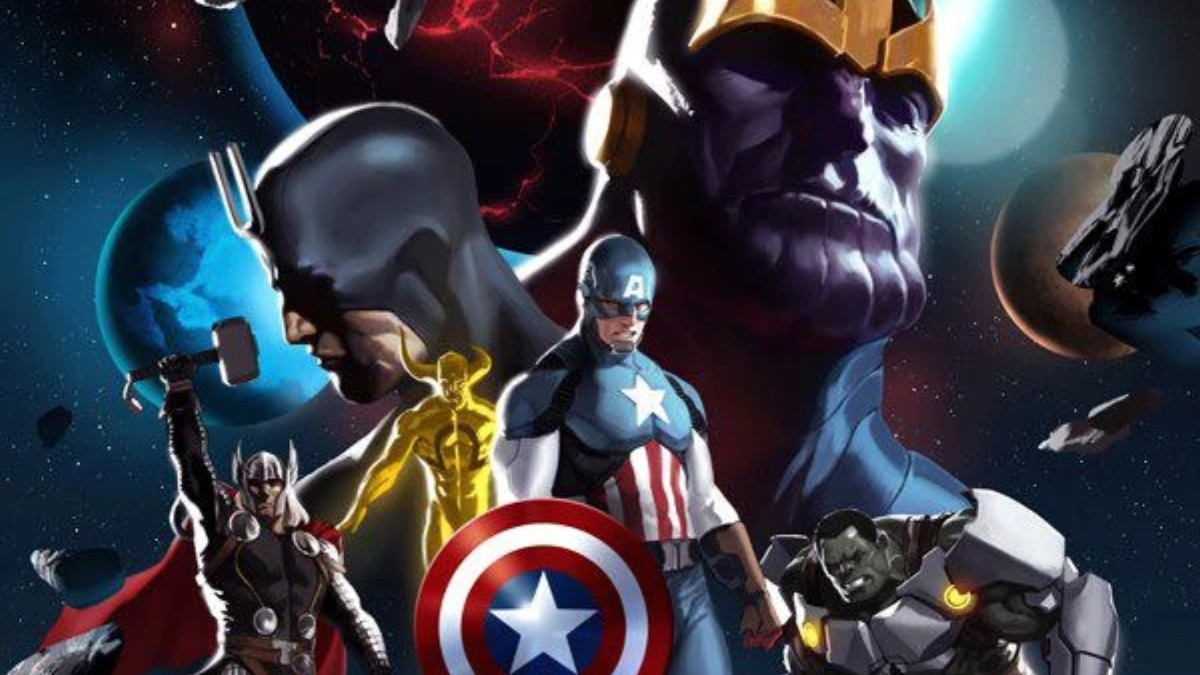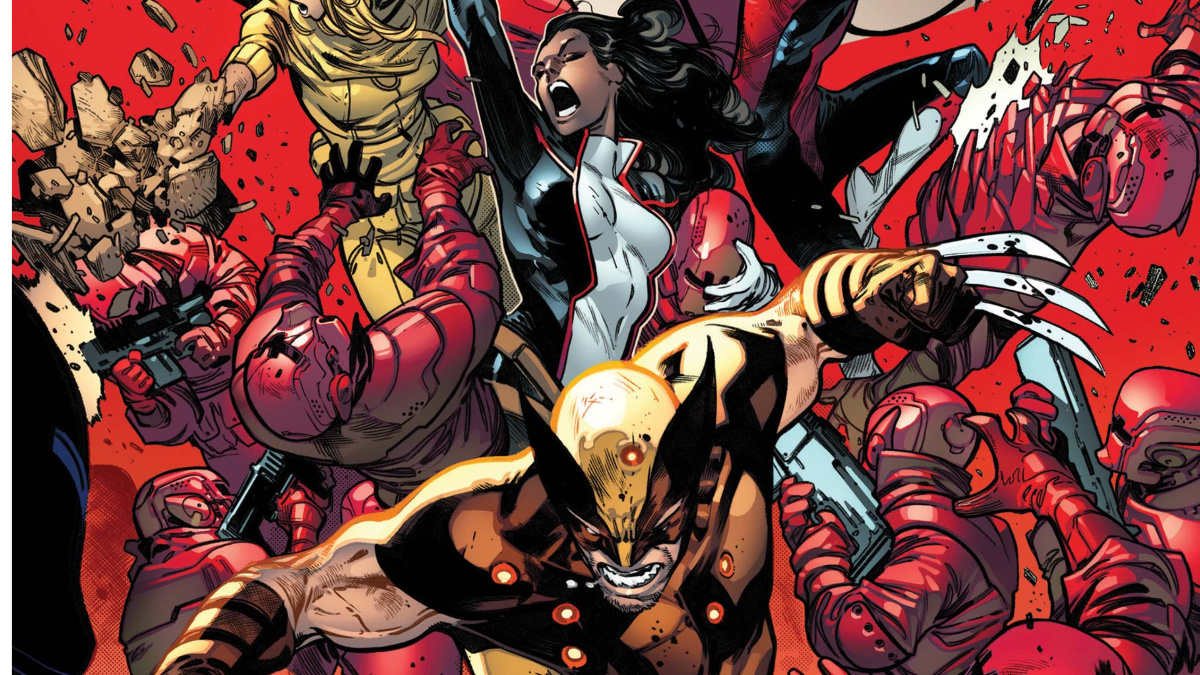
Marvel didn’t invent the superhero or team concept, but they significantly shaped the world of superhero comics by introducing key ideas. One of these was the shared universe concept, where characters and their lives were interconnected, with each event impacting the entire universe. This idea led to what is both loved and loathed about comics – the event comic. Although crossovers had existed since the beginning, event comics took this to its maximum potential. Over time, Marvel developed an event cycle, where each event influenced the ideas for the next.
Unfortunately, Marvel has overused the event comic concept, with their publishing line increasingly relying on them. Despite numerous criticisms, event comics have kept the genre popular due to some truly exceptional stories. Here are ten of Marvel’s best events, crafting narratives that continue to captivate fans even today.
10) Civil War

Many people have strong feelings about “Civil War,” and those opinions are entirely understandable. There’s no denying that the comic has its share of criticisms, such as character misrepresentation, negative impact on Marvel’s publishing line, and a message perceived to support the Bush Administration and the Patriot Act. However, it must be acknowledged that “Civil War” excels as an event book, offering an abundance of spectacle. Artist Steve McNiven executed his task flawlessly, delivering some of the most memorable fights and evocative imagery in comic history.
The debate over the quality of “Civil War” has persisted, but I believe it should not have been subject to such scrutiny. In truth, “Civil War” is a remarkable event comic. It may have its flaws, but it accomplished its objectives in an engaging and entertaining manner. Furthermore, the tie-in comics of “Civil War,” including “New Avengers,” “The Amazing Spider-Man,” “Fantastic Four,” “Wolverine” (yes, even those chapters are worth reading despite common misconceptions), the Young Avengers/Runaway crossover, “She-Hulk,” and especially “Civil War: Frontline,” surpassed the main book in terms of character development and concept execution.
In summary, when considering “Civil War” as a whole, it is far superior to its perceived value.
9) Siege

Among the listed events, “Siege” is the sole one penned by Brian Michael Bendis. Despite Bendis being known for lengthy, often tedious event books in the early 21st century, “Siege” stands out as an exceptional piece of work. The brevity of this four-issue series was crucial; Bendis was unable to prolong the narrative and instead crafted a fast-paced story that concluded his notable Marvel saga, “Dark Reign”, without excessive dramatic episodes. While Bendis’ penchant for dialogue-heavy scenes is evident, it effectively serves the narrative in this instance. The artwork by Olivier Coipel significantly enhances the comic, particularly the battle between Aries and the Sentry which is visually stunning. Coipel’s interpretation of the Sentry/Void character is one of the best, capturing the power and terror associated with the character. Additionally, the tie-in comics, notably “Dark Avengers” and “New Avengers”, written by Bendis himself, are noteworthy additions to this acclaimed Marvel event that unfortunately doesn’t receive as much recognition as it deserves.
8) Infinity

Jonathan Hickman is a writer whose work you’ll encounter frequently on this list due to his exceptional talent for crafting event comics (and arguably the best comics overall). Hickman’s tenure on Avengers and New Avengers series is nothing short of perfect, and it gave rise to two extraordinary events. The first of these is Infinity, illustrated by artists Jerome Opena, Dustin Weaver, and Jim Cheung. Infinity narrates the battle against the Builders, an ancient alien race systematically devastating the 616 universe due to the Incursions. Spanning six issues, this miniseries is quite impressive, but there’s a minor hitch – if you don’t read the tie-ins for Avengers and New Avengers, you’ll miss crucial parts of the story. Fortunately, these tie-ins are now compiled together. When viewed as a whole, Infinity/Avengers/New Avengers forms an exceptional narrative, arguably the finest interstellar war in comic book history.
7) A.X.E. Judgment Day

A.X.E. Judgment Day” by Kieron Gillen and Valerio Schiti
This comic surpassed all expectations, making it one of the top event comics from the last decade (though Marvel events have been subpar for quite some time). Contrary to popular belief, this wasn’t just another hero-versus-hero story as advertised. The conflict between the Eternals and Krakoa seemed like a typical Marvel battle with the Avengers stuck in the middle. However, the authors skillfully turned the narrative on its head, transforming the war into something entirely different midway through. Instead of the predictable hero clash, readers were treated to an engaging, intelligent story that exceeded expectations. This comic is a hidden gem, masterfully crafted by Gillen and Schiti.
6) “Inferno”

Following the unsuccessful conclusion of “Secret Wars II,” Marvel temporarily shelved their annual summer crossover events. However, they didn’t completely abandon the concept, leading to a surge of X-Men-focused crossovers in the mid to late ’80s. Among these, “Inferno” stands out as an exceptional tale and one of Marvel’s most memorable events. The narrative serves as the climax of the Madelyne Pryor storyline, where she succumbs fully to darkness, transforming into the Goblin Queen and aligning with demons from Limbo to destroy Earth. “Inferno” was a multi-series event, encompassing titles like “Uncanny X-Men,” “New Mutants,” “X-Factor,” “Excalibur,” “X-Terminators,” “Avengers,” “Daredevil,” “Power Pack,” “Cloak and Dagger,” “Damage Control,” “Fantastic Four,” “The Spectacular Spider-Man,” “The Amazing Spider-Man,” and “Web of Spider-Man” (with a special issue of “What If…” based on the storyline). This epic tale showcases the exceptional talent that was prevalent at Marvel during the late ’80s. It’s a must-read for any Marvel fan.
5) World War Hulk

World War Hulk, penned by Greg Pak and John Romita Jr., stands out as the top Marvel crossover of the 2000s, with no other storyline coming close. Following the blockbuster tale “Planet Hulk” and weaving into the Illuminati and post-Civil War Marvel Universe, World War Hulk presents the Hulk and his allies launching an attack on Earth in retaliation for the destruction of Sakaar. This five-issue series is essentially a non-stop Hulk rampage, making it consistently entertaining. To fully grasp the storyline, reading “Planet Hulk” is recommended, but given its exceptional quality, that’s hardly an issue. Initially serving as a placeholder event between Civil War and Secret Invasion, World War Hulk surpassed this label significantly due to its explosive and straightforward narrative that never falls short of expectations. The Hulk’s destruction of Iron Man, post-Civil War, also provided a cathartic experience, as the character was widely despised by Marvel fans at the time.
4) House of X/Powers of X

House of X/Powers of X, penned by Jonathan Hickman, illustrated by Pepe Larraz and R.B Silva, isn’t a Marvel-wide event. It’s an X-Men saga, and it ranks among the finest X-Men stories ever told. The plot of these two interwoven books revolves around mutants who have migrated to the sentient island of Krakoa and transformed it into a haven for their kind, aiming to establish their own mutant nation. This places them in direct conflict with Orchis, an anti-mutant organization that comprises every spy agency on Earth, with the sole objective of eliminating mutants before they can wipe out humanity. House of X unfolds in contemporary times, as the X-Men navigate the challenges of statecraft and their war against Orchis. Powers of X transports readers through time and space, revealing potential consequences of the mutant-human conflict, while also serving as a precursor to House of X’s narrative. These tales are nothing short of remarkable, redefining the X-Men comics landscape for five years. Although the Krakoa Era may have faltered at its conclusion, its inception is one of the greatest Marvel events ever written.
3) Infinity Gauntlet

You might be wondering, “Why does Infinity Gauntlet rank third?” Let me clarify. The graphic novel, written by Jim Starlin, George Perez, and Ron Lim, follows Thanos’s destructive journey with the Infinity Gauntlet over six issues. It offers a captivating narrative alongside stunning visual spectacle. While Infinity Gauntlet is exceptional, it does have one minor flaw: the pacing in the first three issues can be slower than the last three. Although these initial issues are vital for the storyline, they may feel slightly draggy at times. Apart from this minor hiccup, Infinity Gauntlet is virtually perfect. It’s epic in every aspect, and it’s no surprise that it’s considered one of the best comic events ever.
2) Infinity War

As a passionate moviegoer of comic book lore, I’d like to share my perspective on a captivating tale: “The Infinity Gauntlet” was not just a standalone story but the inaugural chapter of an epic trilogy. Its direct successor, “Infinity War,” penned by Jim Starlin and Ron Lim, outshines the legendary event comic in every aspect.
In “Infinity War,” we witness the malevolent side of Adam Warlock, known as The Magus, who was expelled following Warlock’s acquisition of the Infinity Gauntlet. This formidable villain concocts a plan to attain godhood, a challenge that will test the mettle of superheroes and cosmic beings alike. It’s an unparalleled event book, offering a mesmerizing narrative. The pacing is impeccably balanced, even the issues with information dumps are interspersed with massive action sequences.
Throughout its pages, “Infinity War” continually raises the stakes for readers, unfolding The Magus’s plan in a breathtakingly beautiful manner. If you haven’t experienced this masterpiece yet, I implore you to seek it out without delay.
1) Secret Wars (2015)

2015’s “Secret Wars” served as the grand finale to Jonathan Hickman’s tenures on both “Avengers/New Avengers” and “Fantastic Four.” The Incursions concluded with Earth-616 colliding with Earth-1610, leading to the creation of Battleworld by Doctor Doom. Subsequent events unfold in an epic manner, as readers delve into the history and societal structure of Battleworld, learn about the resurgence of iconic heroes and villains from both realities, and witness their desperate attempts to thwart Doctor Doom. This series is a remarkable event, as Hickman and artist Esad Ribic deliver the grandiose, cinematic action that Marvel events were renowned for over an extended period. In essence, it’s a masterpiece in comic book form.
Read More
2025-06-11 20:47